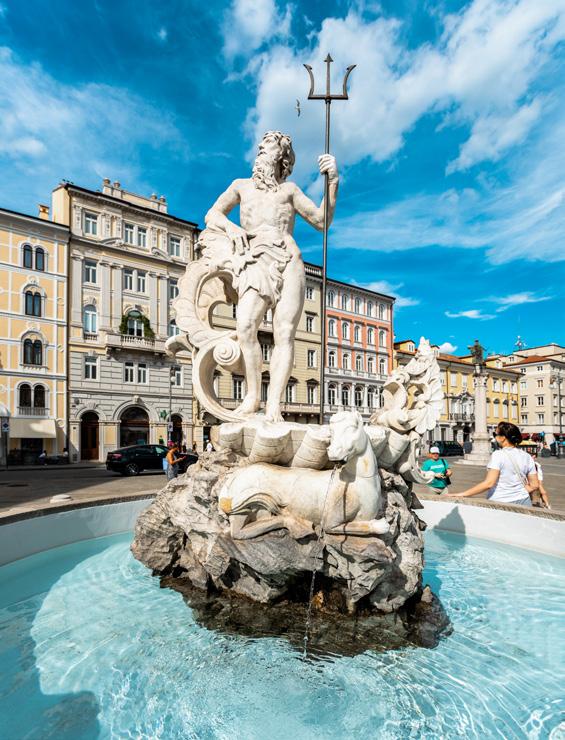
17 minute read
Il mare dentro la città
Chi vive a Trieste non potrebbe mai fare a meno di quello specchio blu che cambia colore assieme al cielo. La connessione tra la città e il mare è talmente forte che la si può ritrovare anche sulla terraferma. Monumenti, strade e piazze nascondono tracce della sua storia e quel legame indissolubile che la caratterizza. Ecco un itinerario per scoprire dettagli, curiosità e chicche del “mare dentro” l’area urbana.
Cominciamo dalla maestosa piazza Unità. Un tempo questa piazza era molto più piccola di quanto lo sia oggi: fino al 1863, quando era conosciuta come piazza San Pietro o piazza Grande, la sua dimensione era dimezzata per la presenza di un mandracchio che ospitava battelli da pesca e altre imbarcazioni. Le lucette blu, che illuminano la pavimentazione della piazza, sono state installate appositamente per indicare fino a dove arrivava il mare.
Advertisement
Poco distante dalla colonna di luce si erge il palazzo del Lloyd Triestino, che oggi ospita gli uffici della Regione del Friuli Venezia Giulia. Questo splendido edificio, progettato dall’architetto Heinrich Von Ferstel tra il 1880 e il 1883, incarna l’eleganza e l’importanza storica legate al mare. Ai piedi della facciata che guarda piazza Unità, sono state collocate due fontane: rappresentano le figure allegoriche di Teti, simbolo dell’acqua dolce, e Venere, simbolo dell’acqua salata.
Andando verso il Municipio, vi imbatterete nella statua dell’Imperatore Carlo VI d’Asburgo, situata di fronte al palazzo Pitteri. Guardandola attentamente noterete che la mano dell’Imperatore punta verso il mare, mentre il suo sguardo si rivolge a piazza della Borsa, il centro dell’attività economica di quel tempo. E proprio in piazza della Borsa, troviamo la Fontana del Nettuno, dio del mare, opera realizzata dall’architetto bergamasco Giovanni Mazzoleni nel 1750. Anticamente fu uno degli sbocchi dell’acquedotto di San Giovanni, voluto da Maria Teresa d’Austria.
Proseguendo il nostro itinerario, incontriamo il Canal Grande. Questo suggestivo canale, progettato dal veneziano Matteo Pirona tra il 1754 e il 1756, rappresentava una via d’accesso al cuore della città per le imbarcazioni. Originariamente, infatti, le acque del canale arrivavano fino all’attuale Chiesa di Sant’Antonio, ma nel 1934 l’ultima porzione fu interrata utilizzando le macerie provenienti dalla demolizione della città vecchia.
Il nostro viaggio nel mare dentro Trieste si conclude con una vera e propria chicca: le pescherie triestine. La loro peculiarità sta nelle vetrine, sulle quali compaiono ogni giorno giochi di parole e frasi divertenti composte con le varie tipologie di pesci presenti nel golfo. Un esempio? La Pescheria Davide in piazza Garibaldi, che regala ai clienti una interpretazione tutta sua dei film celebri come “Il tempo delle chele” e Polp Metal Jacket”. Esplorando le strade di Trieste, capirete che il legame con il mare è presente ovunque: nelle persone, nelle vecchie osterie e buffet e nelle piccole realtà che ogni giorno regalano alla città un po’ di sano morbin
If you live in Trieste, you cannot imagine life without that blue mirror that takes on a new shade every time the sky changes its colour. The bond between the city and her sea is so strong, that it emerges clearly even on dry land. Landmarks, streets, and city squares reveal traces of its history and nature. In the following paragraphs our readers will find an itinerary through the various aspects, fun facts, and titbits of the “sea within” the urban fabric of Trieste.
Let us begin with majestic Piazza Unità. First of all, it was not always as large as it is today: up until 1863, when it was still known as Piazza San Pietro or Piazza Grande, it was half today’s size, because the other half used to host a mandracchio for the mooring of fishing boats and other vessels. The blue lights dotting the pavement today indicate how far the sea used to reach into the city.
Not far from the line of blue lights the building once owned by major shipping company Lloyd Triestino today hosts the seat of the regional administration Regione del Friuli Venezia Giulia: designed by architect Heinrich Von Ferstel between 1880 and 1883, this magnificent edifice embodies both elegance and historical meaning of the sea. At the foot of its façade on Piazza Unità two fountains represent two allegoric figures: Thetis, nymph, and goddess of freshwater; and Venus, symbolising saltwater.
Moving towards City Hall, you will meet the statue of Emperor Charles VI of Hapsburg, standing in front of Palazzo Pitteri. Look closely and you will notice that the Emperor’s raised hand points towards the sea, while his gaze is fixed on Piazza della Borsa, then the very heart of the city’s bustling economic scene. Piazza della Borsa is also where Fontana del Nettuno is found: designed by Bergamo-born architect Giovanni Mazzoleni in 1759, this fountain is dedicated to Neptune, god of freshwater and the sea, and, for a time, it used to be one of the outlets of San Giovanni aqueduct, built under the rule of Empress Maria Theresa of Austria.
The next stop in our itinerary is Canal Grande. Designed by Venice-born architect Matteo Pirona between 1754 and 1756, this picturesque canal was the watercrafts’ entry way into the city centre. Indeed, Canal Grande used to reach all the way to the Church of Sant’Antonio; in 1934, however, the last stretch of water was filled up with the debris resulting from the demolition of the old town.
Our journey into the sea within Trieste ends with a treat: Trieste’s fishmongers’. Their shop windows are part of the attraction, as they are painted everyday with new wordplays and puns hinting at the various seafood of the Gulf. Witness Pescheria Davide, located in Piazza Garibaldi, whose window offers an unusual and hilarious interpretation of famous film titles, that in English would sound approximately like “Modern Brimes” or “Gone with the shrimp”. A walk through the streets of Trieste is enough to understand her deep and all-encompassing connection with the sea: the people, the old inns and buffets, …every little thing that brightens each day with a bit of healthy morbin (Triestine dialect term for merriment, conviviality, and zest for life, N/T).
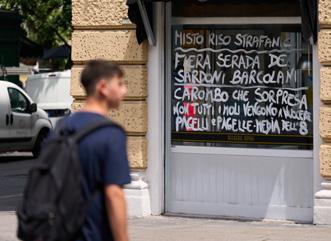

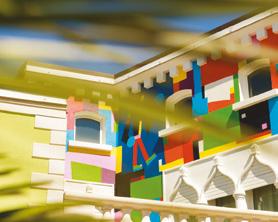

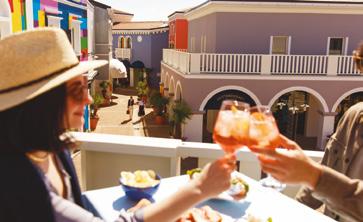
Venti idee di mare dalla città dei venti
Twenty sea ideas from the city of winds
di /by Rino Lombardi
La Bora al mare Bora at sea
La Lanterna
In principio c’era una fiamma su uno scoglio, poi la terra rubò posto al mare. Così nel 1833 venne eretto il bel faro neoclassico disegnato da Matteo Pertsch e rimasto attivo fino al 1969. Vale la pena di girarci attorno, e magari salirci, quando è possibile.
In the beginning was a flame on a cliff, but then the earth forced the sea to retreat. And so it was that in 1833 the beautiful neoclassic lighthouse designed by Matteo Pertsch came to be, and remained operational until 1969. It is worth a closer look – if you are lucky, you may even climb to the top.
Anche lei adora tuffarsi nel golfo di Trieste. Ma d’estate è meno forte che in inverno, diventa borino e rende più sopportabile il caldo in riva al mare. Per prevenire i voli di asciugamani, materassini & co. si suggerisce di usare sassi o altre zavorre creative.
She, too, loves to dive into the Gulf of Trieste. Softened by the summer, she turns from Bora into Borino, a cool breeze and a welcome respite from the unremitting heat of the seaside. Tip: stock up on pebbles, rocks, or any other ballast form, lest a mischievous gust steal your beach towels, mats, and floats.
Faro della Vittoria
Faro della Vittoria Progettato da Arduino Berlam il faro splende anche quando la luce è spenta grazie alla pietra bianchissima di Aurisina e di Orsera che lo riveste. Curiosità: la Vittoria alata in bronzo posta sulla sua cima nasconde uno straordinario meccanismo per resistere alle raffiche di Bora.
Faro della Vittoria, the lighthouse of victory, designed by Arduino Berlam, shines even when the light is off, thanks to the pure white limestone of Aurisina and Orsera covering its walls. Interesting fact: the bronze statue of the Winged Victory at the top of the lighthouse has an internal mechanism that enables it to withstand even the strongest gusts of Bora.
Il mar dello sport Sea of sport
Il golfo di Trieste è uno straordinario campo di gara per gli sport del mare, dalla vela, al canottaggio, dal windsurf, al sup, e, ovviamente, al nuoto e agli sport subacquei. Ma il mare oltre che uno spazio, è anche uno sfondo, splendido, per chi ama fare corse e corsette.
The Gulf of Trieste is an extraordinary marine race track, where athletes compete in every possible discipline of water sports: sailing, kayaking, windsurfing, standup paddleboarding (SUP), and, of course, swimming and underwater diving. Even those who race on dry land, like runners and marathon runners, appreciate the presence of the sea, which provides them with a charming scenery.
Vista mare Sea view
Ci sono scrittori come Grillparzer o Stifter che qui videro il mare per la prima volta, arrivando da quella che si chiama ancora Strada per Vienna. Ma ci sono tanti luoghi speciali per ammirare il grande blu. Da San Giusto o da via Ciamician? Da Conconello o dalla Napoleonica? Etc, etc. Buona visione!
Writers like Grillparzer and Stifter saw the sea for the first time here in Trieste, approaching the Gulf from Strada per Vienna. But this is not the only place where you can enjoy a view of the sea. Indeed, Triestini are truly spoilt for choice: San Giusto or Via Ciamician? Conoconello or Strada Napoleonica? Take your pick and enjoy the view!
Un bagno vintage A vintage bathing experience
Vicinissimo al Pedocin, l’Ausonia è uno stabilimento balneare dal sapore e dall’architettura anni ‘30. A Trieste, forse più che altrove, andare al mare, o come si dice qui “al bagno”, è entrare in una dimensione senza tempo: siamo nel XXI secolo ma sembra di essere ancora nel XX.
Right next to Pedocin, Ausonia is a bathing establishment, whose taste and design date back to the 1930s. Here in Trieste, perhaps more than anywhere else, going to the seaside, or rather going “to the bath”, as the locals say, means entering a timeless dimension: a 21st-century swim in a 20thcentury atmosphere.
Il mare di Miramare The sea of Miramare
Il 28 maggio 1973 veniva affidata al WWF la prima concessione dello specchio acqueo antistante il Castello per farne un “Parco marino per la conservazione della flora e fauna dell’Alto Adriatico”. È la prima riserva marina nata in Italia e nel 2023 festeggia i suoi 50 anni!
On 28th May 1973 the inshore waters of the Castle were put under the aegis of the WWF, to establish a “Marine reserve to protect flora and fauna of the High Adriatic”. It was Italy’s first marine reserve and this year we celebrate the 50th anniversary of its foundation!
Aquario!
Scrivere Aquario invece di Acquario, altrove sarebbe un errore imperdonabile, ma a Trieste si fa eccezione. L’insegna principale qui è scritta proprio così, bene in grande sulla parte alta della facciata e… senza la C! Perché? Perché ricorda il latino “aquarium”. La curiosità non è mai uno sbaglio!
According to the correct Italian spelling, “Aquario” is missing a “c”. Not in Trieste, though, where the (misspelled) term dominates the top of the façade of the city aquarium. This “poetic licence” is actually a reference to the Latin (and English) spelling of “aquarium”. Mistakes are irrelevant when you learn new things!
Marinaresca
“Una fresca bavisela” (una dolce brezza) è la canzone di mare più amata dai triestini.
“Ma se stanòte… ciàpo una sirena / mi te la vojo domani regalàr”. Il pescatore promette alla sua bella che se navigando di notte dovesse incontrare una sirena, la donerebbe alla propria amata insieme a tutti i pesci del mare.
“
Una fresca bavisela” (Triestine dialect for “a cool breeze”) is Trieste’s most beloved sea roundelay. “Ma se stanòte… ciàpo una sirena / mi te la vojo domani regalàr” (“but if tonight…I catch a mermaid / tomorrow I want to give her to you”). The fisherman promises his beau that, if he caught a mermaid while sailing at night, he would bring her back to give to his beloved as a gift, together with all the fish in the sea.
#piccolimaritascabili
Cercate questo hashtag su Instagram per scoprire la collezione di scatti effettuati dal fotografo Massimo Gardone, accomunati dallo stesso orizzonte, a Barcola, ma con condizioni meteorologiche sempre diverse.
–Look for this hashtag on Instagram (it literally translates as “tiny pocket seas”) to find out about photographer Massimo Gardone’s pictures: every frame shows the same horizon, as it was taken in the same spot in Barcola; what changes is the weather, different in every picture.
Ammiramare Admiring the sea
A Miramare si può immaginare il mare ai tempi di Massimiliano e Carlotta, lo si vede, lo si respira, ma… non ci si può tuffare. All’interno del parco, tra le tante bellezze, c’è un luogo molto instagrammabile che cita il mare con originalità: la fontana delle conchiglie.
The sea view from Miramare is a threshold to the past: one can look out and imagine the sea that Maximilian and Charlotte used to see… breath in its scent, look at its blue, but … no diving allowed. Among the countless amenities of the park, there is a perfect instagrammable place with a creative memento of the sea: the shell fountain.
Porto unico
One Port
Porto Vecchio, Porto Vecio, Porto Vivo. Ci sono tanti modi di chiamare quest’area in trasformazione. Un luogo unico al mondo dove si racconta il rapporto di Trieste con un mare chiamato passato e un altro mare chiamato futuro.
Magazzino 26 & co.
Futura sede del nuovo grande Museo del Mare, propone al momento una sezione dedicata al deposito a vista delle collezioni del Lloyd Triestino ed è imminente l’apertura di un piccolo museo del mare temporaneo dove ritrovare la straordinaria storia marinara di questa città.
Magazzino 26 (lit. warehouse 26), destined to become the seat of the upcoming great museum of the sea, currently hosts a display of the collections belonging to former Lloyd Triestino. Before the official inauguration, a temporary scaled-down version of the sea museum will soon open to the public, thus providing a taste of the extraordinary marine history of this city.
I mari del mondo
The seas of the world
L’odierno Palazzo della Regione in passato fu la sede del Lloyd Triestino e prima ancora dell’Österreichischer Lloyd, la più grande compagnia di navigazione dell’Impero Austro-Ungarico, che attivò rotte regolari con il medio e l’estremo Oriente, già prima dell’apertura del canale di Suez.
Today’s seat of the regional administration Palazzo della Regione used to host the headquarters of former Lloyd Triestino, and, before that, of Österreichischer Lloyd, the largest shipping company of the Austro-Hungarian Empire, running regular services to the Near- and Far East even before the inauguration of the Suez Canal.
Porto Vecchio, Porto Vecio, Porto Vivo: old port, off port, live port. This place is called by many names as it undergoes its transformation. There is no other place like this in the whole world – a place that tells the tale of Trieste and her two seas: one is named Past, the other is named Future.
Mari lontani
Distant seas
Mare a Trieste è anche ricerca. La nave rompighiaccio “Laura Bassi” dell’OGS l’Istituto Nazionale di Oceanografia e di Geofisica Sperimentale porta il nome della “città della scienza” nei mari polari per effettuare importanti ricerche nei luoghi che conservano la memoria climatica del pianeta.
In Trieste the sea is also synonymous with research. The icebreaker “Laura Bassi” of the National Institute of Oceanography and Applied Geophysics – OGS was flagged and registered with the district of Trieste and now carries the name of the “city of science” on her polar missions to contribute to research on the Earth’s climate history.

L’osmiza vista mare
Osmiza with a sea view
Si può gustare il mare di Trieste in riva al mare, in un piatto di pesce del golfo, ma si può assaporare anche semplicemente con gli occhi, dall’alto, godendosi un vassoio di salumi, formaggi e vino del territorio in una delle osmize che si affacciano sul golfo. Lo spettacolo è sempre unico!
The taste of Trieste’s sea is served at your seaside table: either as a local seafood course, or simply as a feast for the eyes, you can admire the sea from above, as you enjoy a plate of cured meats, a cheese platter, and a glass of local wine in one of the numerous osmize overlooking the Gulf. A breath-taking and mouthwatering view!
Porto d’artista Fine art port
Nel 1907 Egon Schiele, a 17 anni si ferma in città per due giorni e realizza “Il porto di Trieste”, olio e matita su cartone, dove lo stile espressionista si nota nelle linee che si riflettono nell’acqua, create usando la matita nella pittura ancora bagnata. L’opera appartiene ora a un collezionista privato, da qualche parte nel mondo…
Quando tramonta il sole
When the sun sets
Trieste è una delle città con la maggiore produzione di foto pro capite all’ora del crepuscolo. Tutto il giorno da queste parti c’è una luce speciale, ma alla sera, prima che il sole s’immerga nel mare, i colori del cielo sono capaci di fare meraviglie!
Trieste is one of the cities with the highest rate of pictures taken per person at sunset. The light is spectacular at every hour of the day, but right before the sun disappears into the sea the colours of the sky are pure magic!
Molo da passeggio
A pier for a stroll
C’è un modo tutto triestino di raggiungere l’orizzonte. Basta camminare lungo il Molo Audace, fino ad arrivare alla Bitta dei Venti. A questo punto si può dare uno sguardo a tutto il golfo e oltre, oppure basta girarsi di 180° e godersi una bella veduta della città, magari alle prime luci della sera. Et voilà!
Triestini have their own, unique way of reaching for the horizon: they take a stroll along Molo Audace, all the way to the Bitta dei Venti, at the very edge of the pier. Here you can embrace the entire Gulf with your gaze, or turn your back to the sea and enjoy a stunning view of the city, preferably at dusk. There you go!
In 1907 a then 17-year-old Egon Schiele spent a couple of days in Trieste, where he painted his “Hafen Von Triest (Harbor Of Trieste)”: in this oil and pencil on cardboard Schiele’s expressionist signature style emerges from the lines reflected on the water surface, which he rendered by using the tip of a pencil on wet oil paint. Today, the painting is hanging somewhere in a private collection… gulf, many seas
Un golfo, tanti mari One
“I mari di Trieste”. Una bella antologia curata da Federica Manzon che racconta il rapporto speciale degli scrittori triestini con questo “mare diverso da qualsiasi altro, che da subito cambia nome e diventa più familiarmente “bagno”. Testi di Magris, Pahor, Dorfles, Covacich, Roveredo, Spirito, Tolusso, Mezzena Lona, Heinichen (Ed. Bompiani).
“I mari di Trieste” (i.e., the seas of Trieste). A beautiful compendium edited by Federica Manzon that illustrates the bond between Trieste-born writers and this “unique sea, whose friends call it with the more familiar pet name ‘bagno’ (i.e., bath)”. Manzon’s anthology features passages by Magris, Pahor, Dorfles, Covacich, Roveredo, Spirito, Tolusso, Mezzena Lona, and Heinichen.
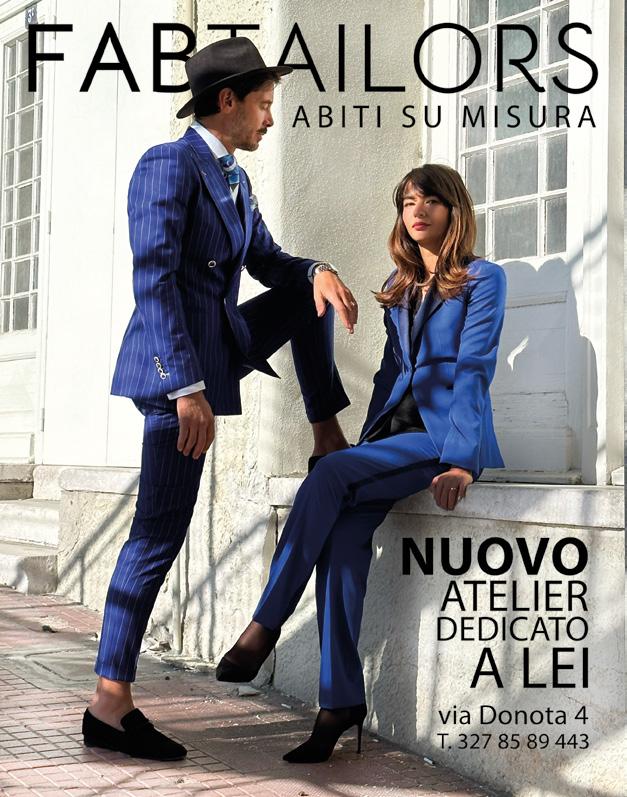
Estate, sole, caldo... Come viverli al meglio? Stare all’aperto tutti insieme oppure tenersi i piccoli, grandi piaceri della bella stagione tutti per sé?
Il modo più facile di uscire di casa è vivere al meglio casa propria. Oggidì è sempre più diffusa la ricerca di case con giardini di proporzioni ridotte, oppure di appartamenti con terrazze, per godersi appieno la dimensione en plein air
Una volta soddisfatto questo desiderio, come arredare l’open space più open che c’è?
Questa estensione della casa verso l’esterno merita tutta l’attenzione che abbiamo dedicato all’interno. Una volta l’argomento veniva trattato un po’ sbrigativamente, con l’inserimento di un tavolo, delle poltroncine e magari di un grill. Tutto veniva predisposto creando una zona pranzo, ma senza le pareti intorno. Il lettino, la brandina, eventualmente l’amaca, erano l’unica soluzione per starsene un po’ in relax. Negli ultimi anni, il settore dell’arredo per esterni è cambiato radicalmente ed è letteralmente esploso con nuove idee, nuove soluzioni, nuove ispirazioni.
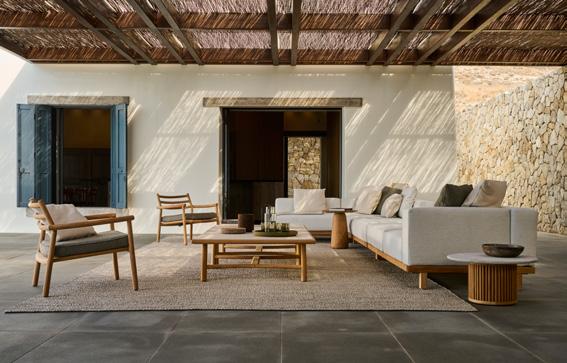
E con nuove contaminazioni, in particolare dai Paesi del nord Europa, che ci hanno insegnato come adoperare gli spazi esterni meglio e sempre, 365 giorni su 365 o quasi. Sono nate aziende specializzate che forniscono arredi per esterni seguendo l’evoluzione di un mercato che diventa sempre più sofisticato. È nato perfino un corso della facoltà di architettura legato a questa tematica, si chiama “Design e architettura del paesaggio”.
Così va a finire che oggi negli spazi all’aria aperta trovano posto divani, poltrone, tavolini, tappeti, lampade e tanti altri complementi. Tutti rigorosamente “da esterni”.
Ovviamente non ci s’inventa produttori e arredatori da un giorno all’altro, perché tutti i materiali che compongono i mobili subiscono un forte stress se messi all’esterno. Ci vogliono solide certezze.
I tempi cambiano e deve cambiare anche il modo di affrontare il tempo da parte delle cose! A tal fine è stato intrapreso un grande lavoro di ricerca da parte delle aziende, sia quelle “storiche” sia quelle più “giovani”, per creare materiali capaci di resistere alle intemperie, ma non solo. È fondamentale anche essere capaci di offrire quella piacevole sensazione di benessere e di comodità che tutti cerchiamo per vivere al meglio casa nostra, sia che si tratti di materiali naturali che di quelli prodotti dall’uomo. Così sono stati creati tessuti speciali, materiali innovativi per le imbottiture, insieme a tante altre novità che riescono ad accogliere le (sacrosante) esigenze di resistenza e di comodità di chi vuole vivere fuori-casa-restando-dentro-casa.
Le aziende del settore vivono un’autentica primavera, esibendo collezioni sempre più belle e confortevoli. Un esempio per tutti: il tappeto. Negli anni sono stati sviluppati materiali sintetici che consentono di realizzare manufatti molto belli e con ottime prestazioni in fatto di resistenza.
Da quello che una volta era chiamato “arredo per esterni”, siamo arrivati così al “salotto per esterni”. Davanti al mare, in campagna, in città, ovunque, il desiderio è uno e trino: essere circondati dalla bellezza, essere rassicurati dalla robustezza, essere coccolati dal confort. Da Zinelli & Perizzi c’è una mentalità bella aperta in questo senso.
Summer, sun, heat... How best to experience them? Get outdoors all together or keep the small, big pleasures of the warm season all to yourself? The easiest way to get out of the house is to live your home to the fullest. Nowadays, it is becoming more and more common to find houses with smaller sized gardens, or apartments with terraces, in order to fully enjoy the en plein air dimension. Once this desire is satisfied, then how can we furnish the most open space there is? This extension of the house to the outside deserves all the attention we have given to the inside. This topic used to be treated somewhat hastily, with the inclusion of a table, armchairs, and perhaps a grill. Everything was set up creating a dining area, but without the walls around it. The lounger, the cot, possibly the hammock, were the only way to sit back and relax. In recent years, the outdoor furniture industry has changed dramatically and has literally exploded with new ideas, new solutions, new inspirations. And with new contaminations, especially from northern European countries, which have taught us how to use outdoor spaces better and almost all year round. Specialized companies now provide outdoor furniture, following the evolution of a market that is becoming more and more sophisticated. There is even a course in the faculty of architecture related to this issue, it is called “Landscape Design and Architecture.”
So it turns out that nowadays sofas, armchairs, coffee tables, rugs, lamps and many other accessories find their place in outdoor spaces. All of them strictly “outdoor”. Of course, we do not invent manufacturers and interior designers overnight, because all the materials that make up furniture undergo great stress when put outside. It takes solid certainties. Times change, and the way things face the weather must also change!
To this end, a great deal of research work has been undertaken by companies, both “historic” and “younger” ones, to create materials that can withstand the weather, but not only that. It is also essential to be able to provide that pleasant feeling of well-being and comfort that we all seek in order to experience our homes to the fullest, whether natural or man-made materials. Thus, special fabrics, innovative upholstery materials, along with many other innovations have been created that are able to accommodate our right needs for durability and comfort for those who want to live outside-home-resting-insidehome. Companies in the industry are experiencing a true springtime, displaying more and more beautiful and comfortable collections. One example for all: the carpet. Over the years, synthetic materials have been developed that make it possible to produce very beautiful artifacts with excellent durability.
From what was once called “outdoor furniture,” we have thus arrived at the “outdoor living room.” In front of the sea, in the country, in the city, anywhere, the desire is one and three: to be surrounded by beauty, to be reassured by sturdiness, to be pampered by comfort. At Zinelli & Perizzi we are quite open-minded in this regard.







